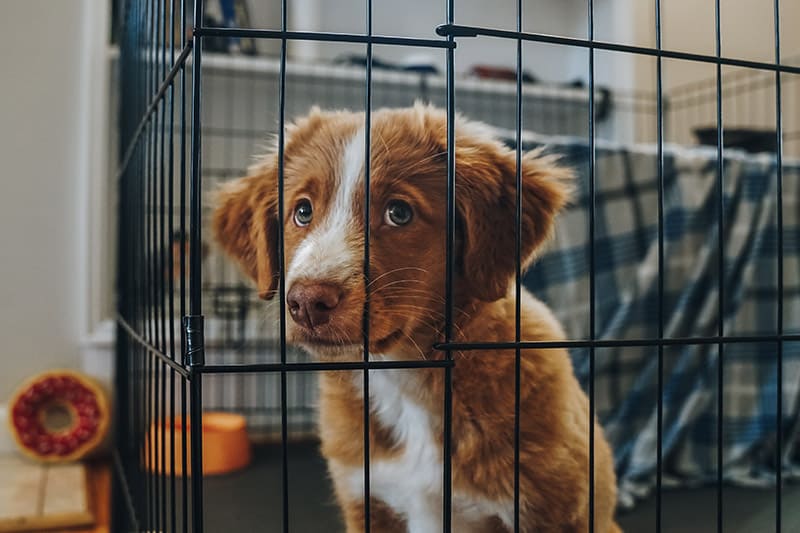Dogs are pack animals that like to live as a family. When you buy a puppy, you become its family. One way, to help your new dog know how to act, is to crate train them.
What is Crate Training?
First, let us say that crate training is a temporary tool. It is not meant to be used as a long term measure to help with your dog’s behavior. So, let’s learn how and why it works.
Crate training uses a cage to help your new puppy adjust to life in your home. Once they are weaned from their mothers, puppies need support and guidance so that they are socialized to humans and living in a home.

The crate allows you to help them with such skills as:
- House breaking them
- Avoiding unwanted behaviors
- Provide a safe place to sleep and rest for your pet
Your dog is housed in the crate for a certain amount of time each day. The crate should be appropriate for the size and age of dog. Any pet put in one should have room to stand up and move around and lay down comfortably. Crates that are too large can encourage soiling. One that is too small can cause anxiety.
Since the crate is to act like a temporary home within a home, fill it with a cozy mat for napping and some toys for your dog to play with. Positioning the crate so the dog can interact with the family can ease anxiety.
To get your dog used to the crate, place them in with the door open. Let them know that they can come and go. Shutting the door lets them know that they must stay there for a while, such as with disciplinary action.

Why Crate Train?
Crate training is important at the beginning of your dog’s stay with your family. Here are a few reasons. One, it can help other pets get used to your new dog. Your new dog can have time alone when they don’t want to play anymore. It also gives them a chance to slowly integrate into the family dynamic.
Two, crate training can help with house breaking your new dog. Create a schedule with it. According to different ages, dogs are not to be crated past a certain bracket of time. For instance, a new puppy that is about ten weeks of age shouldn’t be crated for more than an hour at a time. Since pups have little bladder and bowel control, they should be ready to go outside after their hour in the crate, provided you feed them before crating time.
Three, unwanted behavior can be managed with a crate. They learn to associate spending time in the crate with the door closed with unwanted behaviors like chewing on the furniture, urinating throughout the house or barking loudly.
Crate training is meant to be helpful for you and your dog.
Featured Image Credit: Ayla Verschueren, Unsplash
